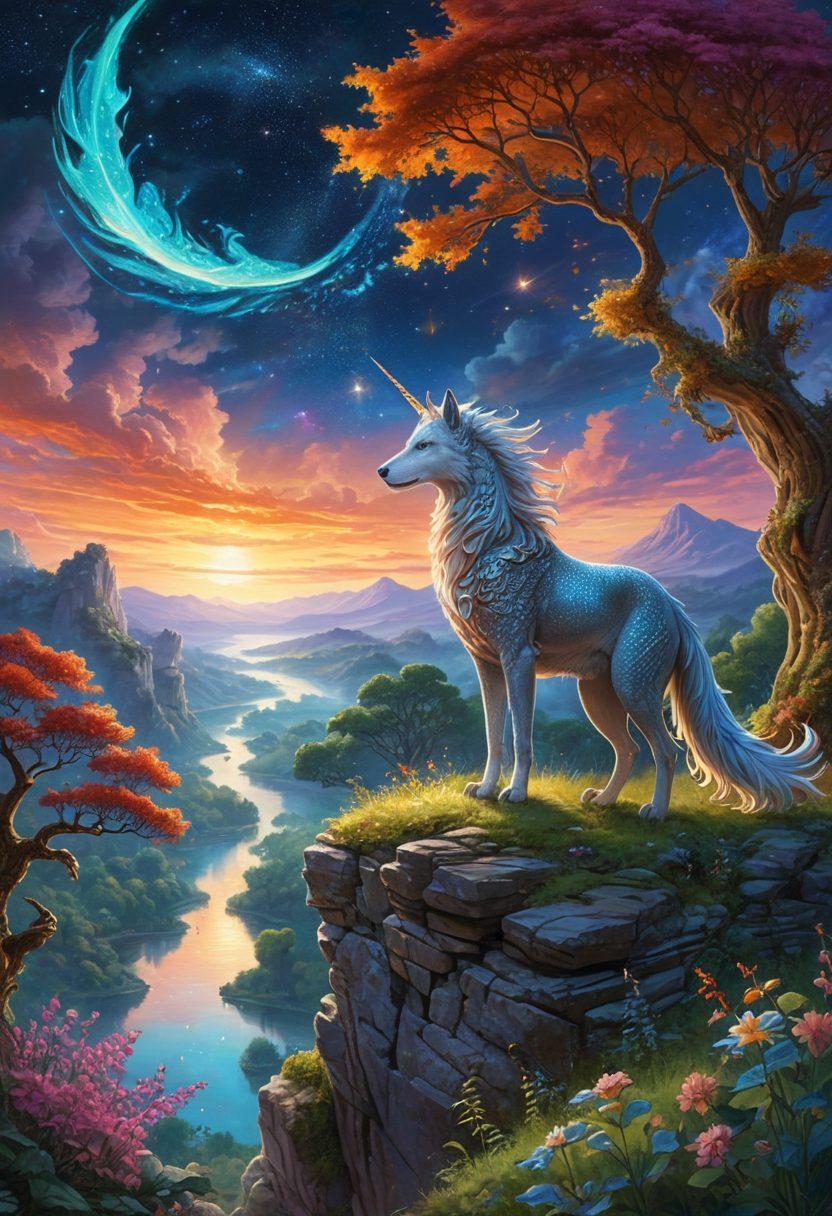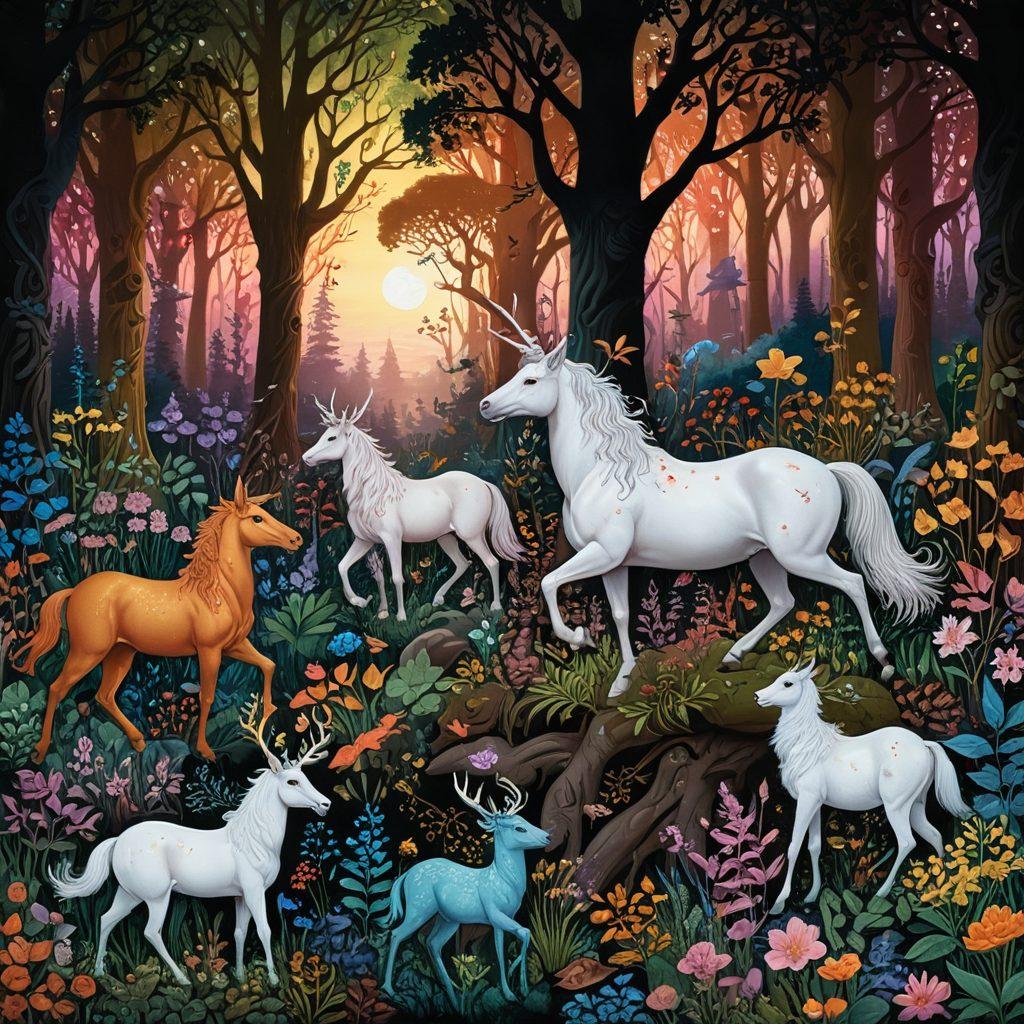Exploring the Fascinating World of Mythical Beasts: A Dive into Creature Mythology and Animal Science
In the colorful tapestry of our world, the line that separates reality from fantasy often blurs, especially when we consider the realm of mythical beasts. These fantastical creatures, often woven into folklore and legend, have not only captured our imaginations but have also sparked a fascinating connection to the scientific study of animals. When we delve into creature mythology, we discover that these mythical beings, from unicorns to dragons, have had a profound influence on modern animal science and wildlife studies. How exactly do these creatures shape our understanding of the animal kingdom?
Take a moment to ponder: What if the legendary creatures of our childhood—like the wise old griffin or the majestic phoenix—were reflections of human curiosity and behavior toward wildlife? Each beast myth carries a nugget of truth, often inspired by real animals and their behaviors. The giraffe might have inspired the longnecked cryptids, while the fierce lion gave way to stories of griffins. Through the lens of beast study—this intriguing blend of creature research and zoology—scientists can uncover the roots of these bizarre yet captivating beast myths that still influence our perception of the animal world today.
Additionally, it's fascinating to see how animal psychology has borrowed from the traits attributed to these mythical beings. Have you ever wondered why we personify animals? Many of our interpretations of wildlife behavior are heavily influenced by the narratives surrounding folklore creatures. For instance, stories about the cunning nature of foxes reflect real-life observations in the animal kingdom, helping to bridge the gap between fantasy and reality. This fascinating intersection leads us into a deeper exploration of creature mythology, unveiling how our stories and studies coexist in the grand narrative of nature studies.
Moreover, the pursuit of understanding these mythical creatures has enriched creature research by prompting scientists to classify various species based on traits often embellished in folklore. For example, the chimeric features of legendary animals fuel the imaginative aspects of beast classification. The quest to unravel the origins and behavioral traits of real-world counterparts illuminates paths in fauna exploration, challenging researchers to align data with the tales told for generations. Isn't it incredible to think that every encounter with wildlife can echo the whispers of our ancestors, blending the realms of myth and science?
As we continue our journey into the captivating world of mythical beasts, the stories of these creatures become rich vessels for understanding wildlife studies. They challenge traditional notions of animal interactions and behaviors while also providing a uniquely human perspective on the wild. So, the next time you delve into a tale about a creature of legend, consider how it reflects our understanding of the natural world and opens the door to ongoing discussions in zoology and beyond. After all, in a world where the line between the fantastical and the factual is ever-evolving, every monster can serve as a springboard for understanding and appreciating the wonders of our animal kingdom.
From Folklore to Fauna: The Science Behind Legendary Creatures
From the towering Gryphon to the sneaky Chupacabra, every culture tells stories of mythical beings that captivate the imagination. Have you ever wondered where these stories come from? What if the roots of these legendary creatures are intertwined with real-world animal science? Mythical creatures, or creatures of legend, often reflect the human experience, embodying our fears, hopes, and dreams. More than just fantasy beasts, they can give us insight into nature studies and wildlife behavior, revealing how we perceive the animal kingdom in our collective consciousness.
The approach to understanding these fascinating beings can be likened to beast study or creature research, where folklore creatures become subjects of inquiry. Let's take the Kraken, for instance. Sailors of yore described a giant sea monster that could take down ships. Today, zoologists speculate that these stories were based on encounters with large squids, showcasing how legendary animals emerge from real fauna exploration. This intersection of myth and reality is what makes creature mythology so enthralling; it challenges us to consider how nature's mysteries often inspire our greatest fantasies.
As we delve deeper into the world of creature mythology, we encounter the field of animal psychology. What drives these mythical beings in tales of old? Are their actions reflective of actual wildlife studies or purely creations of human imagination? For example, were the fierce dragons depicted in various cultures inspired by fierce predatory behaviors or simply a manifestation of human fears of the unknown? These questions not only engage our curiosity but also highlight the importance of understanding beast classification and the role of environment and behavior in shaping our views of both legendary creatures and real animals alike.
Additionally, the passionate pursuit of knowledge across various domains, including zoology, helps us comprehend the metamorphosis of these beast myths into what we now recognize as cultural artifacts. By analyzing the stories passed down through generations, we can identify themes and traits in these legendary creatures that serve similar functions within different cultures. From protective spirits to symbols of destruction, these mythical beings enrich our narratives arming us with lessons that resonate beyond the written word—a classic tale reminding us of nature’s power and unpredictability.
Ultimately, engaging with the idea of mythical beings and their relation to real animals is more than an academic endeavor; it’s an invitation to connect with our surroundings. Have you encountered any folklore creatures in your travels or local stories? Perhaps the next time you explore forests or beaches, you might just find inspiration for your own tales of legendary creatures. As we continue to study the fauna surrounding us, let’s remember that each myth holds a truth—reflective of both our history and the wild world we inhabit. Whether through fantasy, legend, or scientific inquiry, the bond between humanity and the animal kingdom is eternally fascinating, echoing the age-old pursuit of understanding the creatures that share our planet.
Beast Classification and Creature Mythology: A Journey Through Wildlife Studies
Are you ready to embark on an extraordinary journey through the realms of beast classification and creature mythology? The intersection of animal science and mythological beings presents a treasure trove of knowledge and wonder. From the majestic unicorns of folklore to the awe-inspiring dragons that ignite our imaginations, these legendary creatures serve as a bridging point between science and fantasy. As we delve into the fascinating world of wildlife studies, we uncover how these mythical beasts reflect human understanding of the animal kingdom, bringing both knowledge and entertainment.
Imagine walking through a dense forest, where each rustle in the leaves hints at the presence of legendary animals once thought to roam freely among us. These creatures of legend can captivate the heart and spark our curiosity about the real fauna exploration that underpins animal psychology and behavior. Did you know that many beast myths originated from sightings or encounters with real wildlife? The tales of the Kraken, a giant sea monster, likely arose from sailors' encounters with giant squids. What if I told you that the foundation of these captivating stories often lies in our past wildlife behavior observations?
Creature mythology, steeped in history, entwines itself within cultural beliefs, historical events, and natural phenomena. Consider the phoenix, rising from its ashes, symbolizing renewal and resilience – qualities we all aspire to in our lives. Similarly, the centaur, embodying both human intelligence and the wild nature of horses, reminds us of the inherent balance we seek in our lives, mirroring the ongoing journey of nature studies. Through beast classification under zoology, researchers gain insight into how these stories influence our understanding of both mythical beings and the real creatures that share our world.
Every mythical being tells a story, their narratives often driven by human experiences and emotions. Legendary creatures allow us to grapple with the concept of what it means to be 'other' and challenge our perceptions of normalcy in the wildlife arena. The giant yeti, roaming the snowy Himalayas, becomes an enduring symbol of our fascination with the unexplored frontiers of our planet. What if these beast studies are not just musings of the fantastical? What if they reflect deeper truths about our fears, dreams, and aspirations within the vast expanse of the animal kingdom?
In conclusion, the exploration of beast classification and creature mythology is a renaissance of thought, tapping into rich cultural histories and blending them with animal science. As we immerse ourselves in this incredible journey through wildlife studies, let us reflect on the power of storytelling and our innate desire to connect with the mysterious fauna of our world. So, what mythical being speaks to you the most? How can we use creature research not only to appreciate the magic of mythical beings but also to enrich our understanding of the real world around us? It's time to honor and explore both the mythical and the real, as we redefine what it means to coexist with all creatures, legendary and otherwise.


